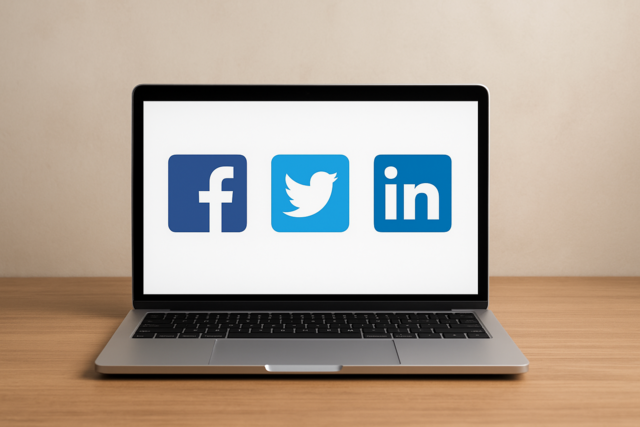Introduction
Reducing your vulnerability to virus attacks means you have to take the time to determine how your computer usage and habits might expose you to a computer virus. Several usage habits can have a direct relation on the level of vulnerability of your computer.
In this article, we will discuss some of the most common factors that relate to virus vulnerability, how you can avoid them, and how to take proactive steps to monitor computer usage in the home and at work to help reduce the amount of spam and potential avenues of attack against your computer.
Tips for Avoiding a Virus
Tips for avoiding a computer virus can be similar to the steps you would take to avoid catching a virus from co-workers or classmates. Staying away from people who are sick, taking care of yourself, and getting enough rest are just some of the things that you do during cold and flu season to protect your health. The same can be said for your computer. Take the time to safeguard your computer as you do for your own health and significantly reduce your risk of virus infection.
Look at your Internet browsing habits. Do you surf incessantly, clicking on link after link? How many different Web pages or sites do you visit on a daily basis? Do you open every funny e-mail attachment you get forwarded to your inbox without knowing where it came from? These questions have a direct relationship on the safety of your computer against virus attack.
In addition, the type of operating system you use also may increase or decrease your risk of virus. For example, Windows-based computers, such as XP and Vista, have grown exponentially more secure as new versions are developed. Windows and Microsoft utilize built-in firewall and virus protection capabilities, but it is up to you to use them. Regularly installing security patches and updates also can significantly reduce your risk of viral attack.
Here are some more questions for you. How many people use your computer on a daily basis? Even if you are careful about your computer usage, what about the usage habits of those borrowing your computer? If you are concerned about security and Internet safety, think of your computer as a hairbrush. Would you share your hairbrush with just anyone? The same goes for sharing your computer.
To avoid virus attacks, tell anyone borrowing or using your computer not to download unknown programs or open e-mail attachments in their e-mail accounts on your computer. If you have children who are consistently using your computer to access social networking Web sites, e-mails, and online chat rooms, seriously consider buying them their own computer, especially if your computer usage is relegated or vital for your work or business.
Identify activities that generate a high risk of viral attack. For example, wireless computers used in popular Wi-Fi locations enable others to piggyback or connect to their laptops through high-speed Internet wireless connections.
The fact is, there are multiple tens of thousands of viruses floating around in cyberspace just waiting for someplace to land. While the good news is that computer security increasingly offers enhanced protection for your laptop and desktop computer systems, most of the viruses propagated today are focused on Microsoft Windows and Office products. If you use such an operating system, take special care to offer continuous protection for your computer. Regular checkups, scanning, and installation of security updates and patches go a long way toward ensuring the health and wellness of your personal computer.
Getting Rid of Spam
One of the best ways to avoid spam is to limit who shares your e-mail address. By carefully sharing your personal information, purchasing items from reputable Web sites, and practicing safe Web browsing and surfing, you can cut down on the amount of spam coming into your inbox.
Set your spam filters to their highest level and utilize the spam blocker settings for your e-mail account. Install and regularly update your virus and antispam software included in your operating system. Understand how it works, how to change your settings, and how to set levels of settings determined by the type of computer and your usage.
One common way of avoiding spam and staying off unwanted mailing lists is to regularly delete your "cookies" and history. A cookie is a small piece of Internet code used to identify the Web sites you visit. Cookies also are found in banner ads on certain Web pages that help track your viewing habits. Cookies also save passwords, user names, and other information on your computer.
Every once in a while, delete your cookie file and browsing history. Here is how, if you are an Internet Explorer user:
-
Open up your Control Panel and click on Internet Options.
-
Click on the Tools tab.
-
Near the top of the pop-up box, you will see a number of tabs labeled General, Security, Privacy, Content, Connections, Programs, and Advanced.
-
Click on the General tab, although this should already be open when you click on the Internet Properties or Internet options box.
-
In the middle of that pop-up box, you should see a section called Browsing History. This section allows you to delete temporary files, history, cookies, save passwords, and Web form information. You should see a little box that says, "Delete browsing history on exit."
-
Click the "delete" button, which will delete your saved passwords, cookies, and temporary Internet files. This tab will not delete any permanent files or documents stored in your computer, nor will it get rid of the icons on your desktop or in any other way affect your computer usage.
That being said, you should also change your user names and passwords for personal access to your banking, bill paying, and any e-mail addresses every few months.
When you are in the Internet Properties or Internet Options section, you can adjust your security and privacy levels, as well as block certain Web sites from use, which is especially beneficial for families with children utilizing the computer.
Explore these tabs. You will find a lot of useful information. For example, under the "Content" tab, you will find access to parental controls that restrict the Internet connections you allow your children to use, as well as content advisers that help you set ratings for the types of Internet content can be viewed on your computer.
Monitoring Downloads and Usage
Specify guidelines and rules for anyone using your computer. Restrict the number and location of downloads whenever possible, and use settings found under the Internet Options or Internet Tools section to block Web sites that you deem dangerous or unacceptable. This will help reduce your risk of worms, viruses, and Trojan horses that may find their way through cyberspace into your computer.
. A number of options are available and can be tried depending on your comfort level. Even if you do not attempt to get rid of a virus on your own, it is a good idea to know how viruses are found and your options for removal.
Getting Rid of a Virus
Introduction
If you are like most people, the hair on the back your neck may stand on end and you may feel a hot flash when you see warning messages suddenly appear on your computer screen. Pop-up boxes with bright red fonts that state, "Virus detected!" or "Threat blocked!" are enough to cause a brief flurry of panic as you stare at your screen and scramble for the "x" at the upper right of your screen to get the heck out of Dodge.
Finding a virus, utilizing software that finds viruses, and knowing your options for removal might take some of the stress out of protecting your computer from infection. You do not have to be a computer whiz to understand the basics of virus removal, and whether or not you attempt virus removal yourself, it is a good idea to know how it is done.
Finding a Virus
One of the easiest ways to get rid of viruses on your computer is to install antivirus software that does most of the work for you. Such antivirus software will regularly scan for viruses on your computer and automatically quarantine them. You will receive a notice that a threat has been blocked or that a virus has been found and gotten rid of.
Never respond to warning messages that pop up through your e-mails that a threat has been noticed. Nine times out of ten, it is spam or junk e-mail and the person propagating it wants to either infect your computer with something by getting you to click on the link found within the e-mail or get your credit card information when you sign up for computer protection.
Again, do not open e-mail attachments unless you are sure where they come from. Always go to the official Web page of any service provider to access services. One way to determine whether e-mails are fraudulent or spam is to check for spelling and grammar errors. Even if the logo seems legitimate, you often will be able to tell that such e-mails are fake by their lack of correct spelling and sentence structure.
In most cases, automatic warning messages that pop up with antivirus software will tell you what was found, where it was found, and whether the virus was fixed or not. Two of the most common messages include:
-
Your program detected the virus but could not remove it from the file.
-
Your program detected a virus, and that file has been quarantined or deleted.
Make sure that your antivirus software program is set to "real time" virus detection. This means that virus protection is running in the background at all times when your computer is on. Keep in mind that viruses are updated and rewritten so frequently that there may be times that your antivirus protection is unable to stop a virus from infecting your computer. In some cases, the codes for viruses are set to install at a later point in time or when certain operating conditions are met.
In most cases, your antivirus software will give you the name of the virus, whether your antivirus software was able to remove the specific virus or whether it cannot, and why. In such cases, copy the name down and go to your antivirus software provider's home page, where you should find links or offer updates or security patches to deal with the specific virus with which you have been attacked. You also will be able to read more information regarding specific viruses and how they affect your computer.
You can also look in your quarantine files to see what has been found. You should be able to find quarantined files by clicking on the antivirus icon or settings on your computer's system, which will take you to a folder containing quarantined files.
Options for Removal
In addition to the antiviral software protecting your computer and helping you get rid of viruses, you may take steps to repair or restore your system yourself. This step-by-step process will help you find more information regarding the virus, how to determine if any damage has been done to your computer and how to restore your computer to its pre-viral condition.
1. Write down the exact name, including the extension of the virus. For example, a recent virus detected by McAfee antivirus software is named W32/Sality.gen.d!1F887759DE6F.
2. Visit the Web site of your antivirus program and look at its virus information pages. The site should have an updated list of recently discovered or recently updated worms, viruses, and other malware codes or programs that can damage your computer. It will tell you whether the risk of the virus is low or high, as well as the date that the virus or updates were loaded onto the Web site.
3. Research information regarding the virus and how it can damage or cause your computer to misbehave.
4. Follow any instructions offered by the antivirus company on how you can ensure that the virus is removed from your computer.
In some cases, you may be able to undergo a step-by-step process that helps you remove the worm or virus from your computer. In many cases, a virus can rename, alter, remove, or corrupt files. This is why it is a good idea to back up your work on a regular basis so that if you need to delete an entire folder or task from your computer, you have a backup copy. Flash drives are especially convenient and useful.
Most computer users are not well versed enough in computer programming to delve too deeply into the inner workings of a computer's hard drive system. Repair programs are available for purchase both online and at your local office supply store for repairing programs that have been damaged by a virus. Be forewarned, however, that depending on the virus that has infected your computer, the repair program may or may not completely eradicate the problem.
If you do not feel perfectly comfortable repairing the damage on your own through such software or you do not understand the instructions, ask a friend who is more knowledgeable in computers to help, or take your computer to be repaired by a professional. It is not unheard of that some people cause more damage to their computers trying to repair it than the virus causes itself.
Many antivirus software providers will give you exact and easy-to-follow instructions on reinstalling damaged or corrupt files on your computer. Print out the instructions before you start. Make sure you understand the terminology and are familiar with your computer settings before starting.
Sometimes, the mess a virus makes of your computer may seem too overwhelming to attempt to fix on your own. Recovery utilities may be damaged and important instruction files known as the registry on your computer may be damaged or corrupt. The registry files are specific configurations settings that tell your computer exactly how to behave and function and are often used by Windows programs.
Note : Do not mess with your registry files unless you are completely comfortable with their function and understand what the registry does. You can irreparably damage your computer and how it functions if you do not know exactly what you are doing. Damage to the registry files can literally destroy your computer and make it impossible for you to repair or reboot it.
In some cases, you may need to uninstall and reinstall software that has been damaged by a virus. This is a relatively simple procedure:
-
Access your Control Panel.
-
Click on "Add or Remove Programs" icon.
-
Click on the program you want to uninstall and follow instructions.
-
Reinstall the software program using purchased software discs and following instructions for installation.
Sometimes the damage to your computer can be so severe that you may need to uninstall and reinstall your entire Windows operating system. Keep in mind that when you do so, you are giving your computer a lobotomy and all its files and memory will be erased and rendered inaccessible.
Conclusion
For most computer users, taking your hard drive into the repair shop is the best bet for removing viruses and the after-effects, unless you are confident in the steps necessary to get rid of the virus on your own. Spending $100 now on repairs may literally save you several hundred dollars or more later on repairs or a new computer.






























